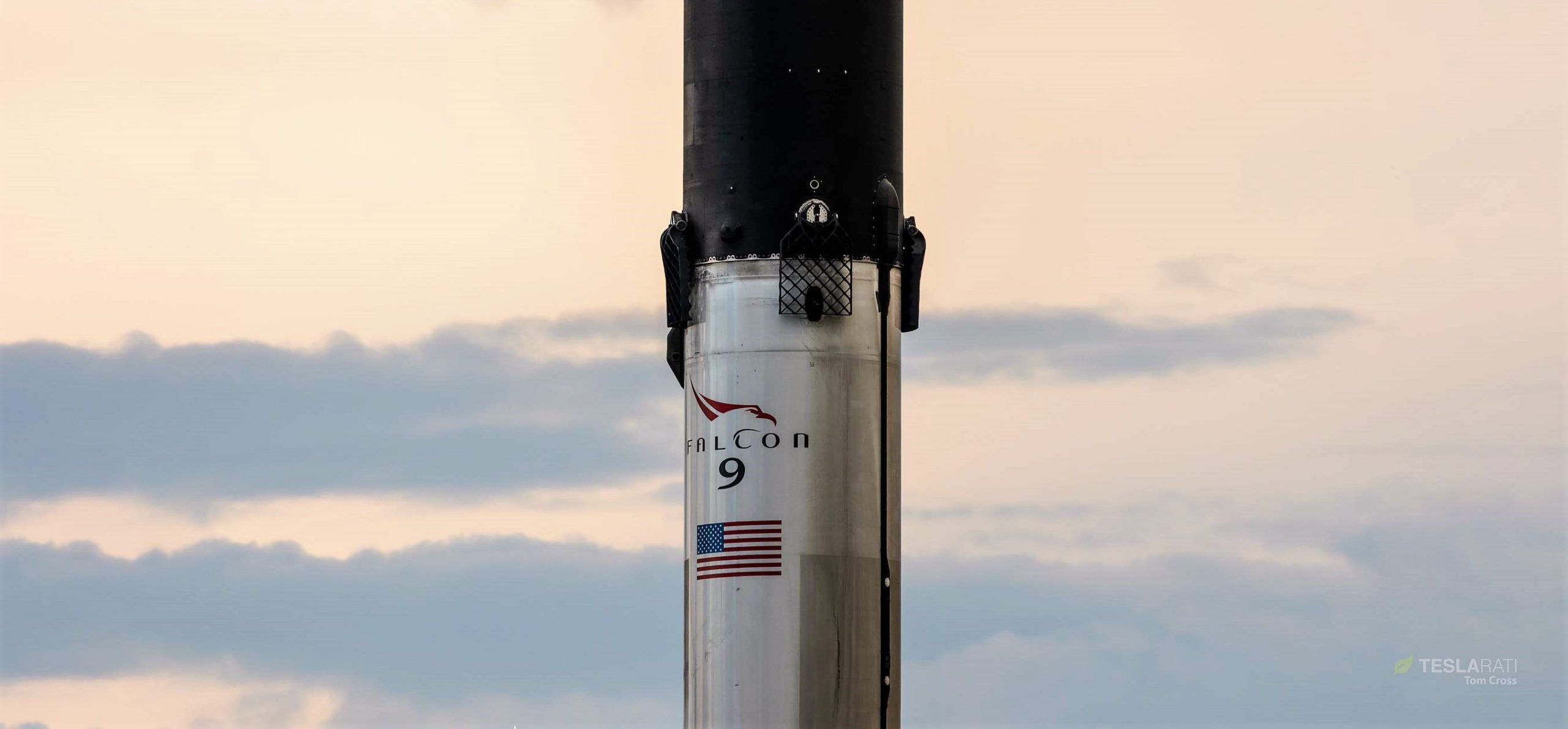
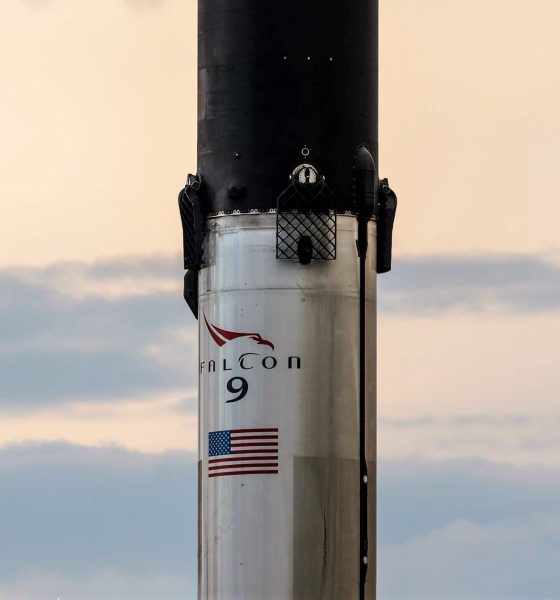
News
SpaceX Falcon 9 nears NASA’s first flight-proven Block 5 launch after static fire delays
After multiple days of delays, many a finger is crossed that SpaceX will be able to perform a critical static fire test of Falcon 9 booster B1056.1 on Friday morning (July 19th).
Falcon 9 B1056 and a fresh upper stage are scheduled to launch Cargo Dragon mission CRS-18 no earlier than 7:35 pm EDT (23:35 UTC), July 21st. As always, SpaceX requires each Falcon 9 rocket to successfully perform a static fire ignition test prior to declaring launch readiness, and B1056 was originally planned to be loaded with propellant and fire its nine Merin 1D engines on Wednesday, July 16th.
After a solid handful of slips, the test has most recently been rescheduled on Friday morning, a delay of 48 hours. SpaceX has demonstrated a three-day turnaround between static fire and launch with Falcon 9 Block 5, but a static fire delay beyond Friday – perhaps even beyond early Friday afternoon – will almost certainly push CRS-18’s launch back a day or two. If not, SpaceX is certainly cutting it close to make the current July 21st date.
In support of Cargo Dragon Commercial Resupply Mission-17 (CRS-17), Falcon 9 B1056 launched for the first time on May 4th, roughly 11 weeks (76 days) ago and 78 days before its planned return to flight. For both SpaceX and NASA, CRS-18 will be a fairly significant launch for a variety of reasons
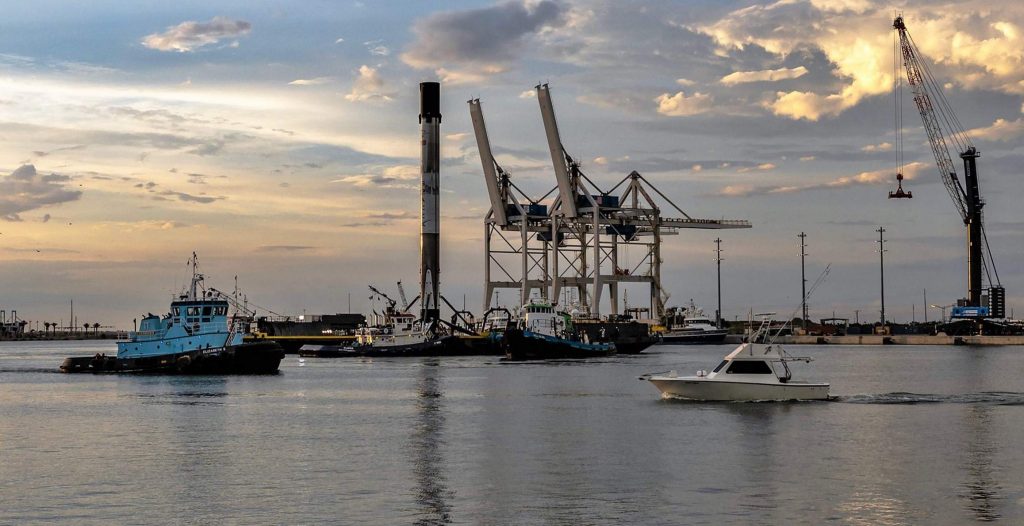
Falcon2
First and foremost, Falcon 9 B1056 previously supported a NASA Cargo Dragon mission, as described above. Even before the booster successfully landed and returned to port, plans were already in order to essentially keep the booster “in family”, reusing it for NASA launches only. Discussed on Teslarati immediately after the subject was broached during a post-launch press conference, NASA manager Kenny Todd didn’t split hairs.
“Quite frankly, [NASA] had a vested interest in this particular booster. We were gonna require it – the intent is to [reuse B1056 on SpaceX’s upcoming CRS-18 launch] and – potentially – CRS-19.”
Kenny Todd, ISS Operations and Integration Manager, NASA Johnson
Not only will NASA fly Cargo Dragon’s CRS-18 mission on B1056, but the agency is already actively considering reusing the same Falcon 9 booster – assuming a successful launch and landing next week – on CRS-19, SpaceX’s second-to-last Dragon 1 (i.e. Cargo Dragon) launch. If all goes well with CRS-18, CRS-19 could come as early as December 2019, while CRS-20 – likely Dragon 1’s last launch ever – is scheduled no earlier than March 2020 and could certainly make use of B1056.3 if NASA is interested.
Dragon3
Meanwhile, although neither SpaceX or NASA have confirmed it, the Cargo Dragon capsule flight-proven Falcon 9 B1056 will itself be flight-proven – although that’s nothing shocking after a full half-dozen successful launches of reused capsules. What will be exceptional, however, is the likely event that CRS-18 will mark the first time that SpaceX has launched the same Cargo Dragon capsule on its third orbital mission.
Speaking all the way back in summer 2017, now two years distant, SpaceX CEO Elon Musk revealed that Cargo Dragon (Dragon 1) was designed at the outset to be reused three times. Almost exactly 24 months later, SpaceX is likely to prove that that is the case. Based on a list of known Dragon 1 capsules and their serial numbers, SpaceX has already launch and reused all but one of the last seven capsules built and successfully recovered. Capsule 107 (C107) supported CRS-5 in January 2015 and was successfully recovered one month later.
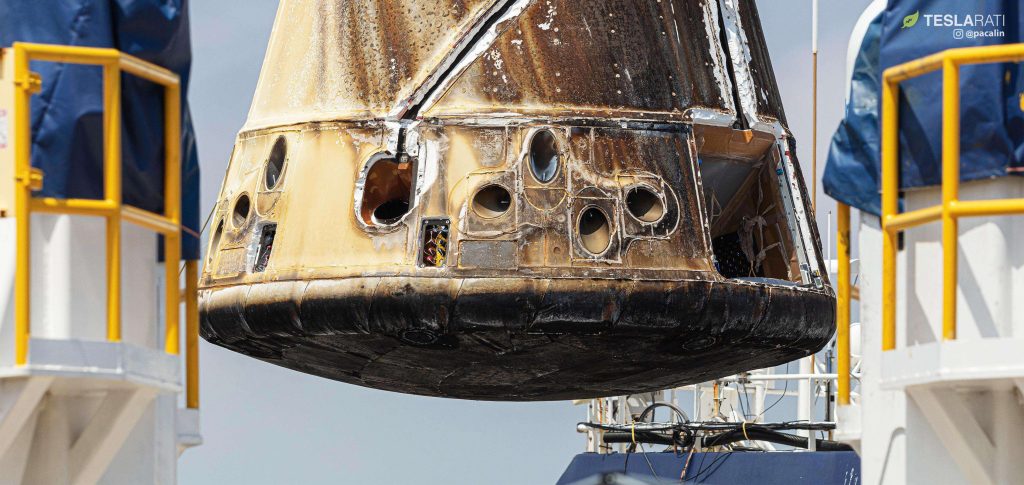
Aside from CRS-7 capsule C109, destroyed in June 2015 during Falcon 9’s first and only in-flight failure, all other capsules (C108-C113) have been successfully launched, recovered, and relaunched. As such, it seems extremely improbable that CRS-5 capsule C107 will be supporting CRS-18. Instead, one of SpaceX’s six twice-flight-proven orbital spacecraft has likely been refurbished for the final time, preparing to become the first orbital-class commercial spacecraft to be reused twice.
Thy Holy Stripe
Finally, it also appears that CRS-18 will mark the debut some sort of on-orbit Falcon upper stage test, hinted at by a grey ring wrapping what looks like just a portion of its fuel (RP-1/kerosene) tank. The objective of this modification is unclear, although chances are good that either NASASpaceflight.com or SpaceX itself will provide at least a bit more information in the coming days.
Check out Teslarati’s Marketplace! We offer Tesla accessories, including for the Tesla Cybertruck and Tesla Model 3.

News
Tesla Full Self-Driving shows confident navigation in heavy snow
So far, from what we’ve seen, snow has not been a huge issue for the most recent Full Self-Driving release. It seems to be acting confidently and handling even snow-covered roads with relative ease.
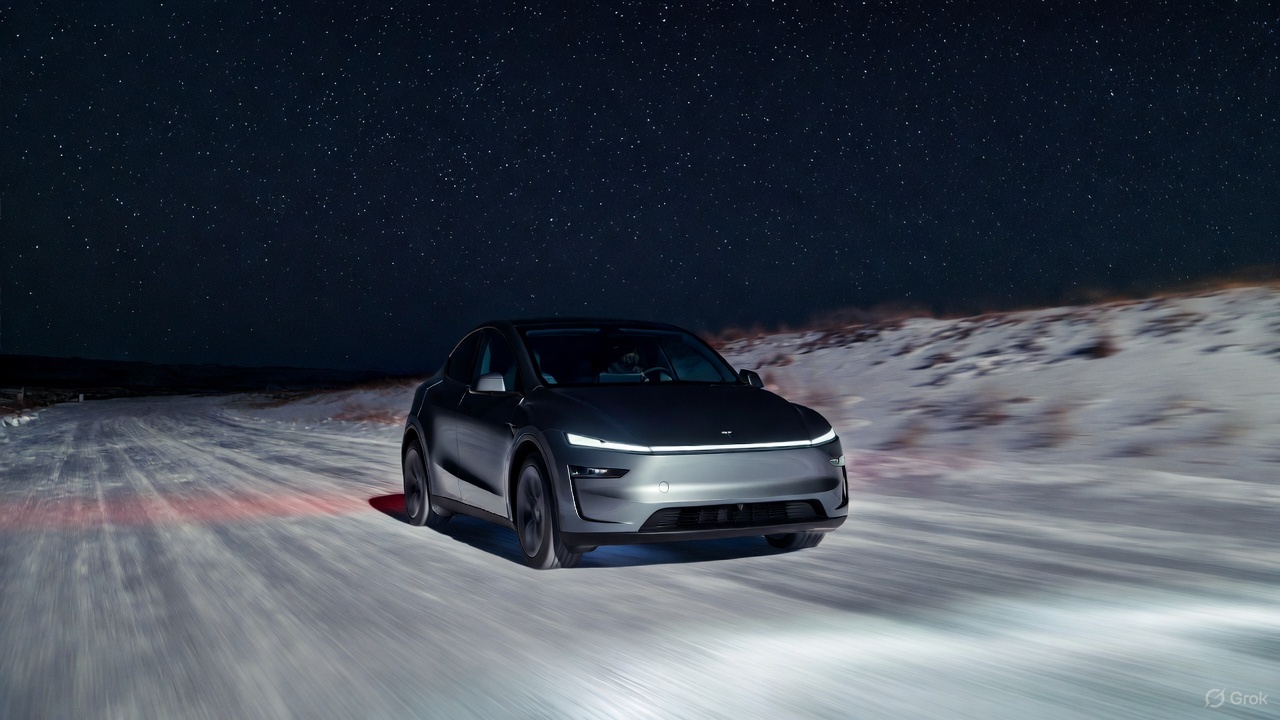
Tesla Full Self-Driving is getting its first taste of Winter weather for late 2025, as snow is starting to fall all across the United States.
The suite has been vastly improved after Tesla released v14 to many owners with capable hardware, and driving performance, along with overall behavior, has really been something to admire. This is by far the best version of FSD Tesla has ever released, and although there are a handful of regressions with each subsequent release, they are usually cleared up within a week or two.
Tesla is releasing a modified version of FSD v14 for Hardware 3 owners: here’s when
However, adverse weather conditions are something that Tesla will have to confront, as heavy rain, snow, and other interesting situations are bound to occur. In order for the vehicles to be fully autonomous, they will have to go through these scenarios safely and accurately.
One big issue I’ve had, especially in heavy rain, is that the camera vision might be obstructed, which will display messages that certain features’ performance might be degraded.
So far, from what we’ve seen, snow has not been a huge issue for the most recent Full Self-Driving release. It seems to be acting confidently and handling even snow-covered roads with relative ease:
FSD 14.1.4 snow storm Ontario Canada pic.twitter.com/jwK1dLYT0w
— Everything AI (@mrteslaspace) November 17, 2025
I found the steepest, unplowed hill in my area and tested the following:
• FSD 14.2.1 on summer tires
• FSD 14.2.1 on winter tires
• Manual drivingBut I think the most impressive part was how FSD went DOWN the hill. FSD in the snow is sublime $TSLA pic.twitter.com/YMcN7Br3PU
— Dillon Loomis (@DillonLoomis) December 2, 2025
Well.. I couldn’t let the boys have all the fun!
Threw the GoPro up and decided to FSD v14.2.1 in the snow. Roads were not compacted like the other day, a little slippery, but overall doable at lower speeds. Enjoy the video and holiday music 🎶
Liked:
Took turns super slow… pic.twitter.com/rIAIeh3Zu3— 🦋Diana🦋 (@99_Colorado) December 3, 2025
Moving into the winter months, it will be very interesting to see how FSD handles even more concerning conditions, especially with black ice, freezing rain and snow mix, and other things that happen during colder conditions.
We are excited to test it ourselves, but I am waiting for heavy snowfall to make it to Pennsylvania so I can truly push it to the limit.
News
Tesla hosts Rome Mayor for first Italian FSD Supervised road demo
The event marked the first time an Italian mayor tested the advanced driver-assistance system in person in Rome’s urban streets.
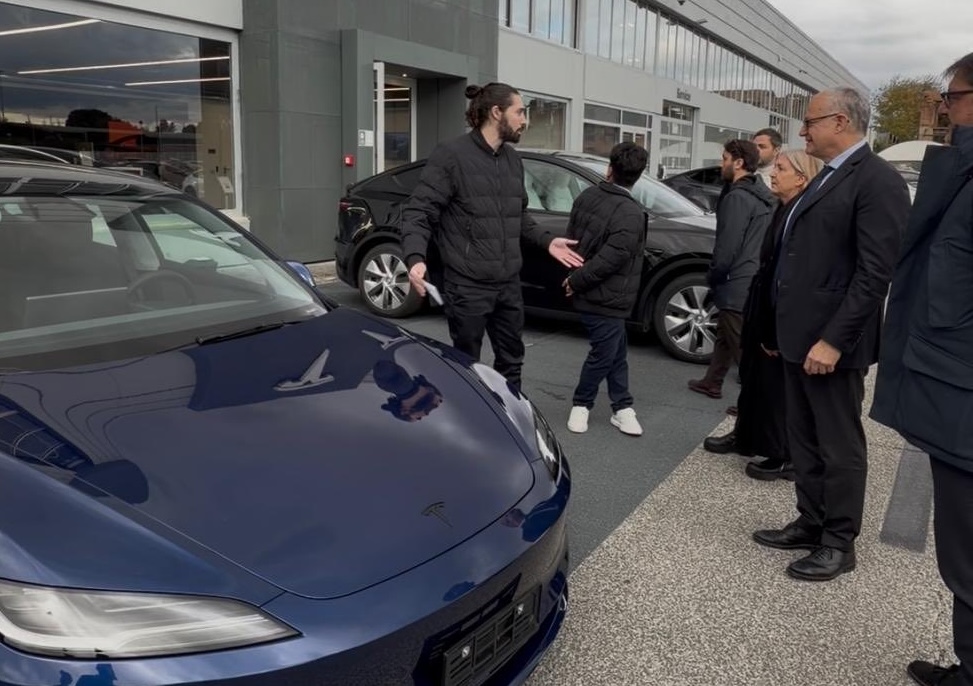
Tesla definitely seems to be actively engaging European officials on FSD’s capabilities, with the company hosting Rome Mayor Roberto Gualtieri and Mobility Assessor Eugenio Patanè for a hands-on road demonstration.
The event marked the first time an Italian mayor tested the advanced driver-assistance system in person in Rome’s urban streets. This comes amid Tesla’s push for FSD’s EU regulatory approvals in the coming year.
Rome officials experience FSD Supervised
Tesla conducted the demo using a Model 3 equipped with Full Self-Driving (Supervised), tackling typical Roman traffic including complex intersections, roundabouts, pedestrian crossings and mixed users like cars, bikes and scooters.
The system showcased AI-based assisted driving, prioritizing safety while maintaining flow. FSD also handled overtakes and lane decisions, though with constant driver supervision.
Investor Andrea Stroppa detailed the event on X, noting the system’s potential to reduce severe collision risks by up to seven times compared to traditional driving, based on Tesla’s data from billions of global fleet miles. The session highlighted FSD’s role as an assistance tool in its Supervised form, not a replacement, with the driver fully responsible at all times.
Path to European rollout
Tesla has logged over 1 million kilometers of testing across 17 European countries, including Italy, to refine FSD for local conditions. The fact that Rome officials personally tested FSD Supervised bodes well for the program’s approval, as it suggests that key individuals are closely watching Tesla’s efforts and innovations.
Assessor Patanè also highlighted the administration’s interest in technologies that boost road safety and urban travel quality, viewing them as aids for both private and public transport while respecting rules.
Replies on X urged involving Italy’s Transport Ministry to speed approvals, with one user noting, “Great idea to involve the mayor! It would be necessary to involve components of the Ministry of Transport and the government as soon as possible: it’s they who can accelerate the approval of FSD in Italy.”
News
Tesla FSD (Supervised) blows away French journalist after test ride
Cadot described FSD as “mind-blowing,” both for the safety of the vehicle’s driving and the “humanity” of its driving behaviors.
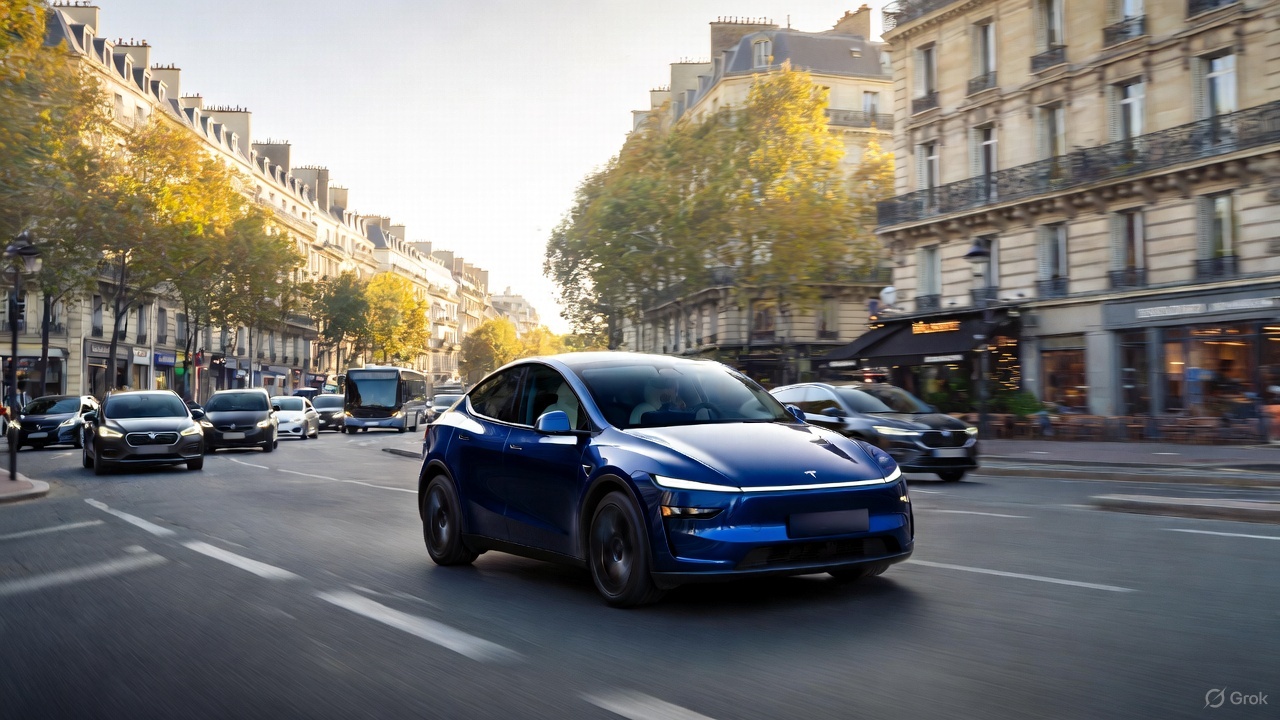
Tesla’s Full Self-Driving (Supervised) seems to be making waves in Europe, with French tech journalist Julien Cadot recently sharing a positive first-hand experience from a supervised test drive in France.
Cadot, who tested the system for Numerama after eight years of anticipation since early Autopilot trials, described FSD as “mind-blowing,” both for the safety of the vehicle’s driving and the “humanity” of its driving behaviors.
Julien Cadot’s FSD test in France
Cadot announced his upcoming test on X, writing in French: “I’m going to test Tesla’s FSD for Numerama in France. 8 years I’ve been waiting to relive the sensations of our very first contact with the unbridled Autopilot of the 2016s.” He followed up shortly after with an initial reaction, writing: “I don’t want to spoil too much because as media we were allowed to film everything and I have a huge video coming… But: it’s mind-blowing! Both for safety and for the ‘humanity’ of the choices.”
His later posts detailed FSD’s specific maneuvers that he found particularly compelling. These include the vehicle safely overtaking a delivery truck by inches, something Cadot said he personally would avoid to protect his rims, but FSD handled flawlessly. He also praised FSD’s cyclist overtakes, as the system always maintained the required 1.5-meter distance by encroaching on the opposite lane when clear. Ultimately, Cadot noted FSD’s decision-making prioritized safety and advancement, which is pretty remarkable.
FSD’s ‘human’ edge over Autopilot
When asked if FSD felt light-years ahead of standard Autopilot, Cadot replied: “It’s incomparable, it’s not the same language.” He elaborated on scenarios like bypassing a parked delivery truck across a solid white line, where FSD assessed safety and proceeded just as a human driver might, rather than halting indefinitely. This “humanity” impressed Cadot the most, as it allowed FSD to fluidly navigate real-world chaos like urban Paris traffic.
Tesla is currently hard at work pushing for the rollout of FSD to several European countries. Recent reports have revealed that Tesla has received approval to operate 19 FSD test vehicles on Spain’s roads, though this number could increase as the program develops. As per the Dirección General de Tráfico (DGT), Tesla would be able to operate its FSD fleet on any national route across Spain. Recent job openings also hint at Tesla starting FSD tests in Austria. Apart from this, the company is also holding FSD demonstrations in Germany, France, and Italy.








